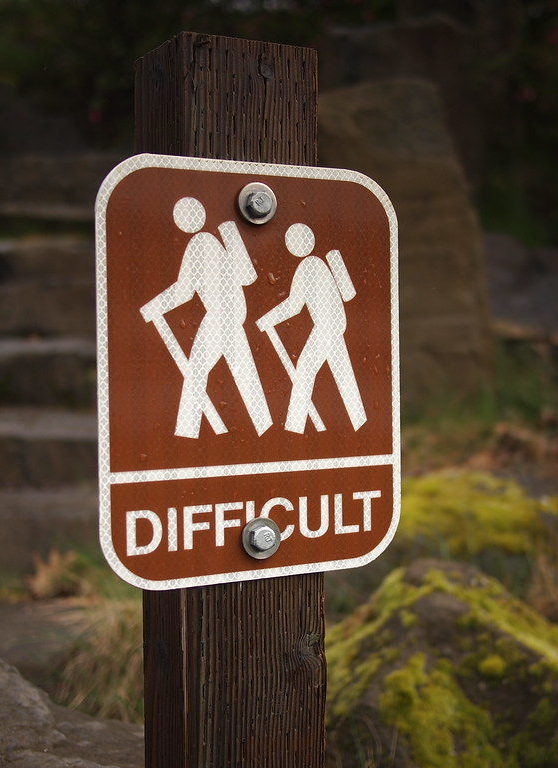Six Primary Pitfalls in Bitcoin
Bitcoin is a novel technology where the key characteristics are somewhat easy to understand but the nuances are very complex. Newcomers to the space run into a number of common Bitcoin pitfalls that we will address here. Our goal is to explain each pitfall and the action or argument that will help you get over that hurdle.

Unit Bias
One of the most common misconceptions that prevents people from getting into Bitcoin is the idea that you have to be able to buy a whole Bitcoin. This is not the case. Just like 1 dollar breaks down into 100 cents, 1 Bitcoin breaks down into smaller units called Satoshis. There are 100 million Satoshis in each Bitcoin, which makes it easy to purchase small amounts for $10, $20, $100, and so forth. For example, at $50,000 per Bitcoin, you could buy 5,000 bitcoin for $2.50, or 50,000 for $25. Don’t let the unit bias prevent you from getting into Bitcoin.
Diversification
Another major hurdle people face upon entering the cryptocurrency space is feeling like they need to diversify into different cryptocurrencies. The consensus of the Bitcoin community is that all other coins, known as altcoins (alternative coins), are unsuccessful at best, and complete scams at worst. This isn’t to say that something innovative might come out of the current pool of over 8,000 altcoins in time, but nothing is anywhere close at this point.
As you learn more about cryptocurrencies, you will start to learn about other prominent coins, such as Etherium, Ripple, and Cardano. You may hear arguments from people involved in these projects. You may be tempted to do some research and find out more. By all means, learn about these to the extent you need to do so. Compare them against Bitcoin’s characteristics, network effects and level of success. You’ll find that Bitcoin is the best possible money and store of value. Bitcoin is successful now. It is the soundest money ever created. Nothing else compares.
“I believe that the invention of Bitcoin is the kind of thing that comes around once in a lifetime; perhaps once in many lifetimes.” – Yan Pritzker, Inventing Bitcoin
Volatility
The Bitcoin market is very volatile. We should first state that there has been an average annualized gain of over 200% for the 10 years it has been around. Over any 5 year period, Bitcoin has never lost value. That being said, there are traditionally very large swings in Bitcoin. It is not uncommon to see a number of 20% to 40% runs and drops throughout a year. You need to have a long term investment view when getting into Bitcoin and be aware that the day after your first purchase you could see a dip.
The way to address volatility is to dollar cost average in, also known as DCA. Dollar cost averaging is taking the amount you want to invest and putting it in over time. For example, if you have $1000 to invest, you could put in $100 over 10 weeks. By using a DCA strategy, you start to ignore the week-to-week volatility. This also keeps you from exiting from your investment during a big dip. You know it will go up over time. You know the runs and dips are all part of the process.
Adjusting your position size is another way to address volatility. If the majority of your wealth is in this one thing, it can be terrifying to watch it go up and down so much. Adjust the size of your position to what you feel comfortable with.

“Bitcoin is diamonds without the blood. Cash without the corruption. Gold without the weight.”
– George Mekhail

Trading Bitcoin/Altcoins
Do not trade. It is difficult enough to buy and just hold on tight. Trying to trade means you are competing against people with far more knowledge and experience than you. Trying to time the market highs and lows against people better than you is a losing game.
On top of that, there are capital gains tax implications that are working against you. Each time you sell any cryptocurrency, or trade one for another, you create a new taxable event. Something to consider is that everyone feels like superman in a bull market. Buy and hold. That’s it. It is very unlikely you will do better by trading over the long term.
It Is Too Difficult To Learn
Understanding Bitcoin to the level where you can invest and be a part of this new financial system is not difficult. Depending on your understanding of technology and economics, some aspects of Bitcoin will be harder to grasp than others. Is it worth it? If Bitcoin goes the way many Bitcoiners think it well, the earlier you make the effort to learn about it, the more value you will receive.
Ask yourself, do you need to understand how a plane works to travel? Do you need to know how your car works to drive? Do you need to know the technology behind Visa to use your credit card?
It doesn’t require too much information to get some skin in the game and stake your claim on some Bitcoin. However, there are a few things you really should know to safely invest and protect your investment. Anything more than that will give you a broader understanding of what you are investing in. Once you have a small amount invested, continue to educate yourself because Bitcoin is an incredibly interesting technology.
Fear, Uncertainty and Doubt
Fear, Uncertainty and Doubt, aka FUD, in the Bitcoin space refers to the variety of articles and arguments against Bitcoin. There are many entities out there that do not understand Bitcoin or actively want it to fail. Even though there are counter arguments to all of these, they do not get the press they should.
If you have concerns along these lines, or just want to see some of the counter arguments, head to this article called Every Reason Bitcoin Will Not Fail.